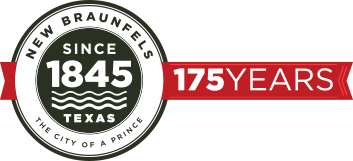By Myra Lee Adams Goff
Have you ever eaten white paste? If you have, you probably went to school in the ‘30s and ‘40s. I never ate paste myself because I was told it was made out of horses’ hooves, and that did it! No paste for me, but I did chew on pencils and an occasional crayon. When there were real fountain pens that you had to fill up with ink, some kids actually imbibed in blue ink. You could tell by the remnants of ink at the corner of their mouths. What a diet. Why this strange menu, I wonder. Paste, pencils, and ink for a drink.
Lamar Elementary School (and I suppose Carl Schurz Elementary) had its first school cafeteria in the early ‘40s. Government surplus made up a lot of the menu, like peanut butter and bananas. My first and last peanut butter and banana sandwich was eaten there. Maybe this is why children munched on school supplies.
In the ‘60s when I was teaching at Carl Schurz, peanut butter was again a surplus commodity. There were barrels and barrels of it. All this peanut butter had to be dealt with. My favorite was a single slice of tomato with two ice cream scoops of pb on top. If we had gotten a doggie bag we could have made two sandwiches for supper. Another day we had a pb cookie that was four inches across. The cooks did a good job at both of these schools adjusting to all those surplus commodities.
In the 1840s the settlers would have given anything for any kind of surplus, especially for school children. Once upon a time local historical hero Hermann Seele was contracted with the Adelsverein to teach school to the children of immigrants who came to New Braunfels. Right below the area that later came to be called Sophienburg Hill (where our museum is located) there was in 1845 a huge elm forest. A spot was chosen in that forest to conduct the first school on August 11, 1845. Fifteen children showed up to be taught reading, writing, and arithmetic in German and in English. Come to think of it, Seele was way ahead of his time with his “open classroom, no walls concept”. That approach to education was tried in the 1960’s but didn’t last long.
When Seele came from Germany he brought along a teaching device called an orrery (planetarium). It had only eight planets because Pluto wasn’t discovered until 1930. Now Pluto has been thrown out as a planet. Science books everywhere are out of date and Seele’s orrery is the latest in planetariums, even though it’s over 160 years old. The Sophienburg Museum has a nice exhibit dealing with education in New Braunfels. It features Seele and his orrery. There is also a video about NB education made by students of Heidi O’Keefe, German teacher at Canyon High School.
Just 13 years after that first school under the trees, the Texas Legislature chartered the New Braunfels Academy and granted it the right to levy taxes. Thus NB became the first tax-supported school in the state of Texas.
What happened to those elm trees? One by one they fell as homes and roads were built until there was only one large tree left in the middle of the street at the bottom of the Sophienburg hill. Once I ran into it head-on skating down that hill. Alas, the tree succumbed to asphalt and it looked so pitiful that it was removed, but there is a plaque in the middle of the street that marks the spot. There is also a huge hunk of the trunk in the museum. This lone tree was by itself for such a long time that everyone assumed that it was the tree under which Seele taught. No research marks a specific tree, only that he taught “under the elms”.
The Warnecke pictures of last column brought some interesting response. Myrtle Nowotny said that her brother, Louis “Sonny” Meyer was right there near the front. Kenneth Brietzke said that his brothers Carlon and Raymond were both there, as was Walter “Boobie” Hartmann and Louie Jonas. Kenneth called his older brother Carlon who lives in Chicago and he gave some interesting facts about the day that the Life photographer showed up. He said that the guy just rounded up everyone that he could and they hauled tubes down from the bathhouse for the “train”. Last week two Life magazines surfaced at the Sophienburg and revealed that the picture was actually a feature cover for an inside story, and not the outside cover.









